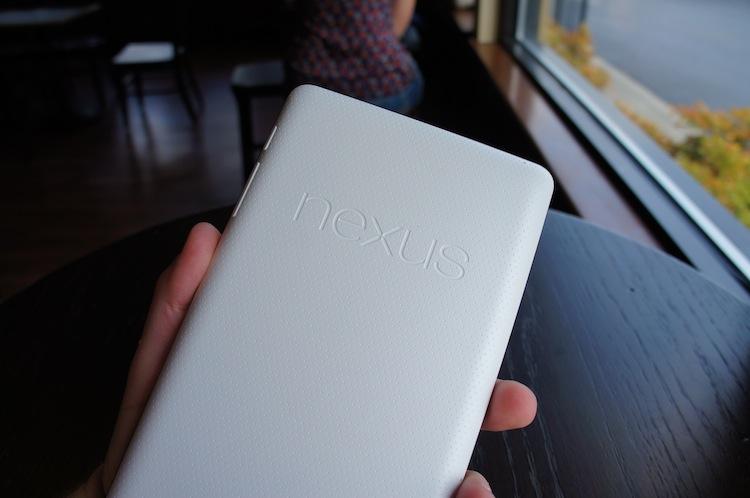
With millions of units selling each quarter, it's safe to say tablets are no longer questioned as serious products. The initial skepticism stemmed from the questionable pricing Apple brought to the table with the original iPad. Yet there are now iPads and Android tablets in a large portion of American households, and soon there will be Windows RT tablets like Surface on desks and in book bags around the world.
Hundreds of companies are diving into the tablet sector head-first, and a handful are in what some are calling "a race to the bottom." The arguably high price tag of the iPad, Surface and other high-end tablets have created room and demand for much cheaper, high-end tablets.
Using its expansive online digital content store to offset the loss on hardware and manufacturing costs, Amazon introduced the Kindle Fire last year with surprisingly low pricing. For just $199, buyers could get their hands on a decent 7-inch tablet with relatively high-end specifications (for that time, anyway). Then Google joined the race with the ASUS-built Nexus 7. Also for $199 (and an alternate option of double the storage for $50 more), the Nexus 7 hit shelves this past summer with killer specs in tow, such as: a 7-inch (1,280 by 800 pixel) LCD panel, 1.3GHz quad-core Tegra 3 chipset, 4,325mAh battery and either 8GB or 16GB of built-in storage.
Amazon has since dropped the Kindle Fire pricing to $159 while introducing a new Kindle Fire HD for $199.
To date, the Nexus 7 and the original Kindle Fire have been two of the most popular Android tablets ever. This week, The Telegraph reported that the Nexus 7 is the best selling Android tablet ever. And talk of even cheaper tablets is snowballing.
Yesterday, rumormonger DigiTimes ran a story that suggests three Asian-based Google partners are working on an even more affordable Nexus tablet. For an unsubsidized $99, buyers will allegedly get their hands on a tablet powered by a WonderMedia PRIZM 8950 processor and a HUVA TN display by HannStar by year's end.
For starters, let it be clear that this is nothing more than a rumor, and it's coming from a source that gets a good portion of the rumors it spits out wrong. Second, The Verge's Aaron Souppouris notes how unlikely it is that Google would partner with a company on a device powered by anything other than popular chip manufacturers' – Qualcomm, NVIDIA, etc. – products.
But, for the sake of this argument, let's assume a $99 Nexus tablet will come by the end of the year. As lovely as the price tag may be, let's consider some things before you convince yourself you want to buy one for everyone in your family.
Hardware alone, we know that the Kindle Fire and Nexus 7 are sold near, possibly even at or slightly below, cost. Amazon and Google are sacrificing profits to get hardware in people's hands so they can make money on digital content sales. It's a fairly successful tactic that few companies can compete with. (It's difficult to sell a device near cost in hopes of profits of digital content if you don't have a digital content store to call your own. In this case, the Asian manufacturer could be partnering with Google in a similar way ASUS did. There's nothing wrong with that, except for the end product.)
It's not impossible to make a tablet and sell it for a profit for less than $200. Tablet manufacturers have been doing this for years. In fact, I've purchased several tablets for under $200. But they're insignificant and forgettable, at best. In order to make a profit on hardware that cheap, corners have to be cut in all the wrong places: processor, display, materials, storage, memory, etc.
Look at the Nexus 7, for example. It's a great tablet, especially for only $200. But say ASUS and Google decided to skimp on the Tegra 3 processor in favor of manufacturing costs. Let's say they went with a processor just one-year-old, like the Tegra 2. And instead of the 1,280 by 800 pixel display, let's say they went with WVGA. And assume they offered a micro SD card slot with only 2GB of built-in storage instead of 8GB as the bottom tier device.
Tiny changes such as these greatly impact the end product. Not to mention, the components would still likely surpass $100. And when you factor in manufacturing, labor, packaging, assembly and other pieces of the puzzle, the $99 price point seems less and less likely. It's still possible, though, but not without tarnishing the Nexus brand.
So far, every Nexus device has been a high-quality, memorable device. From the Nexus One to the Nexus 7 and Nexus Q, outward appearance and internals have been nothing to scoff at. Nexus may not necessarily be the number one choice for those who want top tier specs. But the overall experience offered by Nexus products has never been sub par.
A $99 Nexus tablet would likely change that. It would almost certainly use lousy, cheap or outdated components at the sacrifice of everything Google and the Android development team have been working towards: polish, a buttery smooth experience and quality.
There are hundreds of Android devices that already do this. But not a Nexus. And this is where Google opening up the Nexus program could seriously take a turn for the worse.
What say you, folks? Do you see a $99 Nexus tablet coming at the benefit of consumers and Google's Nexus brand? Should Google strive to keep quality a top priority with Nexus? Or will they let a poorly made, cheap tablet ruin its brand?